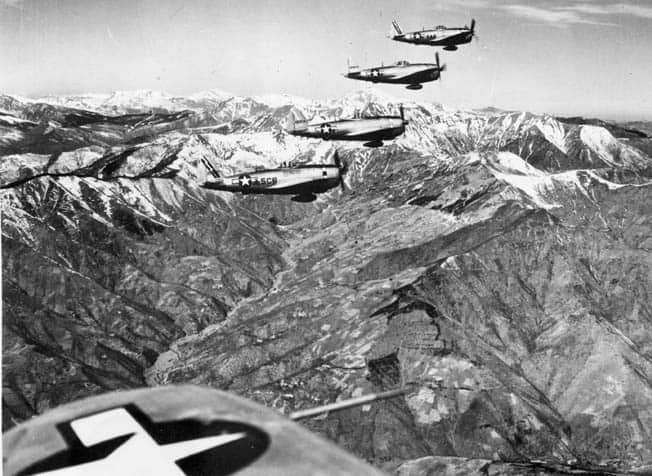By Phil Kohn. Dedicated to the memory of his father, GM3 Walter Kohn, U.S. Navy Armed Guard, USNR, and all men and women who have answered the country’s call in time of need. Phil can be contacted at ww2remembered@yahoo.com.
The Allies begin a heavy aerial bombing campaign over Vienna, Austria, on March 17. In Rîbniţa, Romania, the Nazis execute 400 people: prisoners of war, Soviet citizens and anti-fascist Romanians.
On March 18, the Red Army approaches the Romanian border. In Germany, Adm. Miklós Horthy, Regent of Hungary (an Axis ally), having been summoned to meet with Hitler, is arrested. In Italy, Mt. Vesuvius — about five-and-a-half miles east of Naples — erupts for the first time since 1929, killing 26 people and causing thousands to flee from their homes. The eruption also causes the removal of several Allied airfields located near the volcano’s base.
The RAF on March 19 launches “Operation Strangle,” aimed at cutting German communications in Italy. In Germany, Hungary’s Horthy is forced by Hitler to agree to new terms regarding their “alliance.” Hitler orders the occupation of Hungary by German troops to prevent it from dropping out of the war and to keep open a line of retreat for German forces to the east. Eleven German divisions cross the Hungarian border from Austria, encountering minimal resistance. Deportation to Auschwitz of the first of Hungary’s 750,000 Jews begins immediately.
The Red Army enters Romania on March 20. On the return from a Berlin bombing run, RAF Flight Sgt. Nicholas Alkemade’s Avro Lancaster heavy bomber is hit by flak over Schmallenberg, Germany, and bursts into flames. Rather than burn to death, Alkemade opts to die by jumping from the burning plane from an altitude of 18,000 feet without his parachute (it had caught fire and burned). However, his fall is broken by pine-tree branches, and he lands in deep snow with only a sprained leg. Subsequently captured, he is interrogated by the Gestapo who are skeptical of his claim until the wreckage of his plane is found and examined. The Germans are so impressed that he bailed out without a parachute and lived, that they issue him a certificate testifying to the feat. (Flight Sgt. Alkemade is freed and repatriated in May 1945.) In the Soviet Union, express train service resumes between Moscow and Leningrad.
On March 21, the British 20th Indian Division — called back to India to help defend against a Japanese invasion (“Operation U-Go”) — completes its fighting withdrawal from northern Burma. The division now holds a line on the Shenan Hills between Palel and Wangjing, both in Manipur State, about 23 miles southeast of Imphal. The 17th Indian Division — also recalled from Burma — continues fighting through roadblocks held by the Japanese 33rd Division, in its effort to pull back towards Imphal.
Frankfurt am Main, Germany, is bombed by the Allies on March 22. In Berlin, the formation of a new Hungarian government is announced. It will be led by the Hungarian ambassador to Germany, Döme Sztójay, as prime minister.
The Japanese Fifteenth Army enters India from Burma on March 23 and moves toward Imphal. The goal of Japanese commander Lt. Gen. Renya Mutaguchi’s self-proclaimed “March on Delhi” is to take Imphal as well as Kohima, a supply-distribution center 86 miles to the north, before moving on to the even-larger British supply base at Dimapur, west of Kohima. (The bases are supplying Allied troops in Burma and — by air — in China.) The Japanese 33rd Division is tasked with attacking Imphal from the south, supplemented by two divisions of Azad Hind Fauj (National Indian Army) troops; the 31st Division is to attack from the north, with elements sent northward towards Kohima; and the 15th Division is to attack Imphal from the east, cutting the Imphal-Kohima road. Imphal is being defended by the 17th and 23rd Indian Divisions of Lt. Gen. Slim’s British Fourteenth Army. In Italy, 16 Italian Partisans ambush a column of German SS police marching down a street in central Rome, killing 35 with a bomb they had planted. All the Partisans escape.





